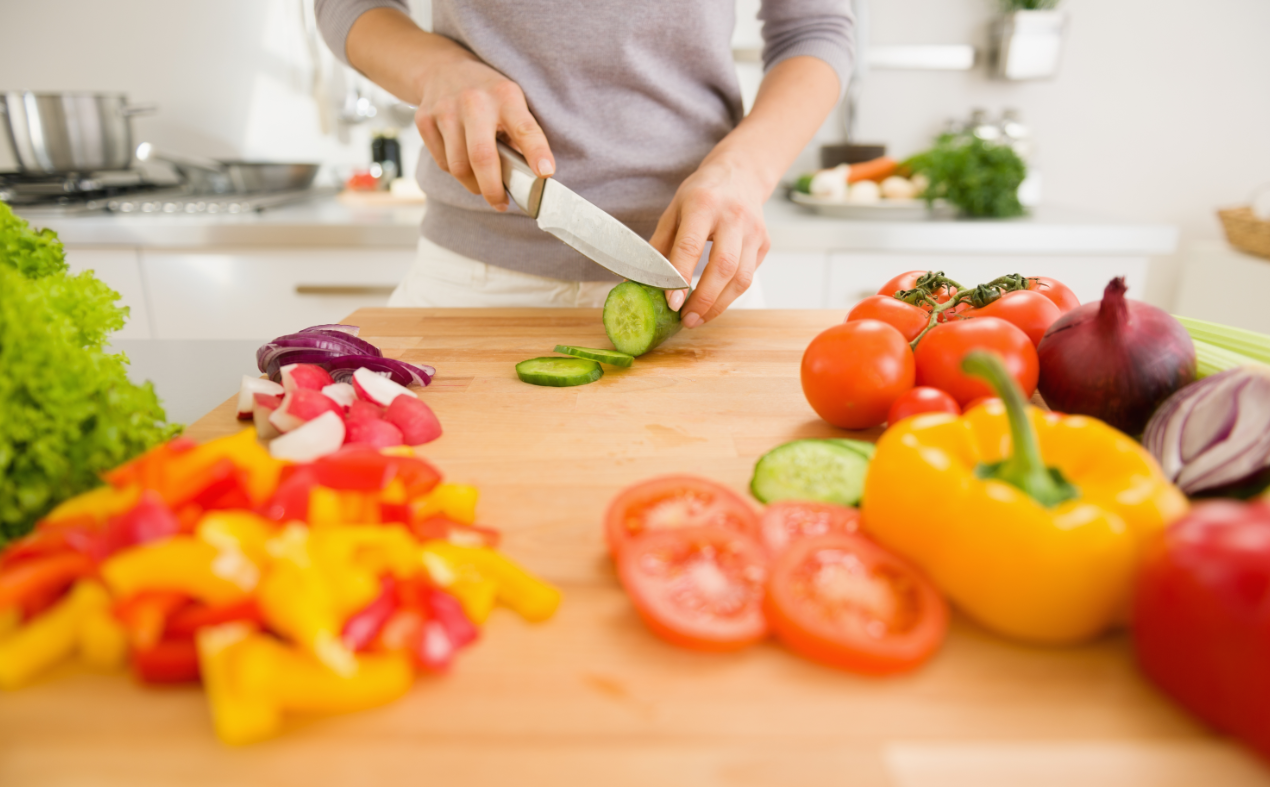Remember the Four Food Groups? If you grew up in Canada, you probably learned them in elementary school. But according to the newest official Healthy Eating Recommendations, it might be time to un-learn them.
Canada’s new Food Guide is out, and it takes a remarkably simplified approach to healthy eating. It’s refreshing to see specific measured portions replaced by general guidelines about how to think about food. Here are some of the main points, which are so straightforward, they’re easy enough for kids to understand:
- Focus on fruits and vegetables and whole grains, and choose plant-based protein foods more often.
- Limit highly processed foods (packaged or fast food). They often contain too much salt, fat, and sugar.
- Choose water instead of pop or juice to drink.
- Read food labels carefully, and learn to understand them. Marketing can make you think something is healthier than it really is.
Health Canada has even gone a step further to make recommendations on the social side of eating. They suggest eat mindfully, so you can notice when you’re full, and taking the time to plan and enjoy your meals with family.
So, how do I use these new guidelines when I’m feeding my kids? Well, it’s easier said than done, but as a mom of 3 kids under 10 with fairly picky tastes, here are some practices I’m planning to try:
- Find a way to incorporate cooking into the time I spend with my kids — it doesn’t have to be a full meal. Have the kids help prepare a weekend snack of cut up veggies (little ones not ready for a knife can try a crinkle-cut chopping tool) or help pack their lunches, set the table, and serve other family members. I know my middle child especially loves being a helper and having her own responsibilities!
- Talk about ingredients in packaged foods, which ones there are often too much of, and how to balance between treats and healthy food. That being said, it’s important not to attach moral value to food — “good” vs. “bad” just promotes feelings of shame.
- Stick to water — this one is easy for us because we have a SodaStream and the kids LOVE sparkling water. A fun reusable straw also encourages them to drink more.
- Try a totally new food once a week. I find the kids get really excited if they learn a little about a certain kind of food before they try it. Find a YouTube video of someone preparing a food dish, and hype it up a little. All they need to do is try it; the rest of their plate will be something more familiar I know they’ll eat. It’s even more exciting if you can manage to take them to the grocery store to buy the new food.
One last thing to remember is that we often overestimate the amount that kids need to eat, so if your little ones are growing well and meeting their milestones, try not to stress out if they reject food. Just offer it again another time, maybe when they’re in a better mood.
Happy eating!
The Parent Life Network is a participant in the Amazon Services LLC Associates Program, an affiliate advertising program designed to provide a means for sites to earn advertising fees by advertising and linking to amazon.ca. We only recommend products we actually like—how else would we sleep at night? When you purchase through our links, you’re helping support our awesome free content, at no extra cost to you.
*Opinions expressed are those of the author, and not necessarily those of Parent Life Network or their partners.



 Sponsored
Sponsored




